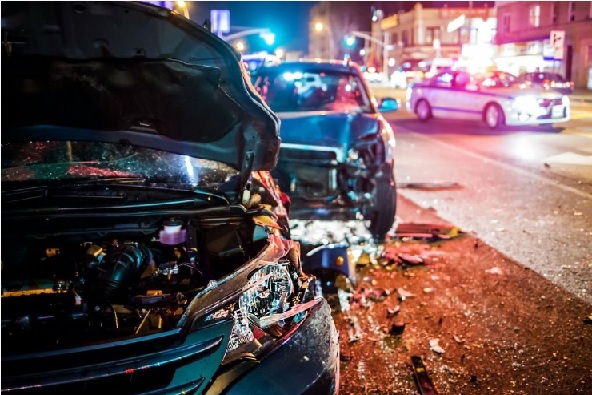Amidst the growing popularity of ride-hailing services, concerns about safety and compensation in the event of accidents have risen. This comprehensive guide delves into the complexities of accidents involving these services and outlines the compensation process to help users understand their rights and options.
Explaining Ride-Hailing Services
As exemplified by Uber and Lyft, ride-hailing services provide a modern solution to transportation needs, connecting passengers with drivers through mobile apps. These services offer convenience, affordability, and accessibility, transforming the traditional transportation landscape.
Understanding Compensation in Ride-Hailing Accidents
In the context of ride-hailing accidents, compensation refers to financial reimbursement for individuals who suffer injuries or damages. It aims to cover medical expenses, lost income, pain, suffering, and more, with amounts varying based on the accident’s specifics.
Available Compensation Types in Ride-Hailing Incidents
Victims of ride-hailing accidents can seek various compensation types, including medical expenses, lost wages due to injury, property damage, pain and suffering, and wrongful death. The exact compensation depends on the accident’s details and the victim’s circumstances.
Identifying Common Causes of Ride-Hailing Accidents
Factors like distracted driving, speeding, and driver fatigue frequently contribute to ride-hailing accidents. Identifying and addressing these causes is crucial for improving the overall safety of these services.
Contributing Factors to Ride-Hailing Accidents
Several elements, including driver fatigue, distracted driving, insufficient training, and poor vehicle maintenance, heighten the risk of accidents in ride-hailing services. Understanding these factors is key to enhancing passenger safety.
Steps to Take Following a Ride-Hailing Accident
In the aftermath of a ride-hailing accident, it’s essential to seek medical attention, report the incident to the service provider, gather evidence, and consult an attorney to protect your rights.
Seeking Immediate Medical Attention After an Accident
Post-accident, prioritize assessing injuries and seeking medical help—document all treatments and related expenses, which are crucial for any subsequent legal claims. It’s advisable to also contact a lawyer and medical accident helpline, like 1-800 ASK-GARY, for professional guidance on legal rights and assistance in dealing with insurance and legal processes. This step can ensure you are fully supported throughout your recovery and legal journey.
Reporting Accidents to the Ride-Hailing Company
Report any accidents promptly to the ride-hailing service, providing detailed information. This step is crucial for initiating the compensation process and ensuring proper follow-up.
Effective Evidence Gathering after an Accident
Gather comprehensive evidence post-accident, including photographs, witness information, and medical records. This evidence is vital for building a strong compensation claim.
Consulting Legal Experts Post-Accident
After a ride-hailing service accident, seek advice from an experienced personal injury attorney. They can guide you through legal proceedings and help in securing fair compensation.
Deciphering Compensation Determination in Ride-Hailing Accidents
Understanding how compensation is determined in these accidents involves insurance coverage considerations, assessing driver negligence, and navigating the concept of comparative fault.
Insurance Coverage in Compensation Claims
In ride-hailing accidents, it’s essential to understand the insurance policies involved. This includes reviewing the ride-hailing company’s coverage, reporting the accident, and consulting an attorney for guidance.
Role of Driver Negligence in Compensation
Driver negligence, such as reckless driving or distraction, is critical in compensation claims. Proving negligence is essential for a successful claim.
Comparative Fault and Its Impact on Compensation
The principle of comparative fault plays a significant role in determining compensation in ride-hailing accidents. Understanding this legal concept and its application in your jurisdiction is crucial.
Challenges in Obtaining Compensation for Ride-Hailing Accidents
Navigating the compensation claim process can be daunting, with hurdles like insurance coverage limits, the complexity of legal processes, and the need for thorough documentation.
Overcoming Insurance Coverage Limit Challenges
Understanding and dealing with insurance coverage limits requires a thorough review of policies and possible legal action to ensure adequate compensation.
Tackling the Complex Legal Process
The legal process following a ride-hailing accident can be intricate. Seeking legal counsel, gathering relevant evidence, and maintaining accurate documentation are crucial steps.
Ensuring Proper Documentation for Claims
Maintaining comprehensive and accurate documentation is vital for strengthening your claim and enhancing the chances of receiving deserved compensation.
Preventing Ride-Hailing Service Accidents
To minimize the risk of accidents, users should choose reputable ride-hailing companies, adhere to safety practices, and remain vigilant to avoid distractions during rides.
Selecting Reputable Ride-Hailing Companies
Choose ride-hailing services with solid safety records, thorough driver background checks, and adequate insurance coverage. Research and consider user reviews for informed decision-making.
Safety Measures for Ride-Hailing Users
Adhering to safety measures, such as wearing seatbelts and following traffic laws, is crucial for reducing accident risks. Alertness to the driver’s behavior and road conditions also plays a significant role in ensuring safety.
Avoiding Distractions for Safer Rides
Staying alert and minimizing distractions like phone usage can significantly lower the risk of accidents during ride-hailing trips.
Conclusion: Ensuring Safety in Ride-Hailing Services
While ride-hailing services offer convenience and accessibility, it’s paramount for users to be aware of the potential risks and the compensation process in the event of an accident. By understanding the causes of accidents, knowing the steps to take afterward, and actively working to prevent such incidents, passengers and drivers alike can contribute to a safer ride-hailing experience. In cases of accidents, timely medical attention, proper documentation, and legal consultation are crucial to navigating the compensation process effectively. Ultimately, safety in ride-hailing services is a shared responsibility, requiring the vigilance and cooperation of all parties involved.
